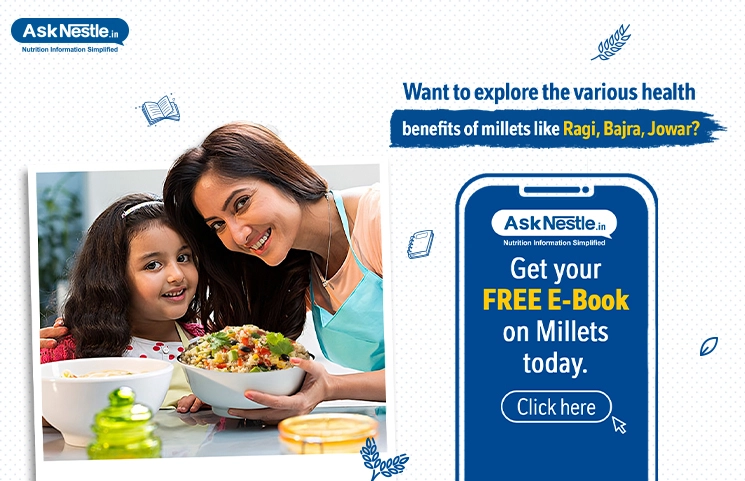A balanced diet not only keeps you full and energised all day long, but is also paramount to your overall well-being. Dive in and discover how a balanced diet that includes whole grains, vegetables, and plant oils is the key to achieving your health goals.
It is no secret that you need food to fuel your body, stay strong, go about your everyday routine, build immunity against common infectious diseases like the common cold, and prevent lifestyle diseases.
However, that doesn’t mean that you can eat without self-restraint or binge on anything, especially on those foods that do more harm than good, like junk foods high in salt or sugar. The primary importance of a balanced diet is that it nourishes you, satiates your hunger and keeps you fit. In this article, we have listed a few guidelines and recommendations that can help you chart out and follow a healthy balanced diet easily.
What is a balanced diet?
As the name indicates, a balanced diet contains all essential nutrients in optimum quantities from a variety of foods that provide balanced nutrition to meet the daily requirements and maintain a healthy body.
The components of a balanced diet for adults and children vary depending on the following factors:
- Individual needs (gender, physical activity level, lifestyle)
- Locally available foods
- Dietary and cultural customs
Health benefits of a balanced diet
Consumption of a balanced meal should be a basic part of everyone's daily routine. It is a prerequisite to sustaining a healthy lifestyle. The following are some of the reasons that highlight the importance of a balanced diet:
- Prevents nutritional deficiencies.
- Helps maintain a healthy body weight along with physical activity.
- Boosts immunity and might aid in avoiding illnesses.
- Keeps you feeling full for longer.
- Decreases your craving for sugary foods.
- Helps in maintaining mental well-being by providing vital nutrients.
- Helps the body in growth and maintenance.
- Assist in maintaining healthy skin and hair.
- Prevents early signs of ageing.
- Alleviates sleeplessness and regulates the sleep cycle.
Guidelines for healthy eating:
Some basic guidelines for a healthy balanced diet are as follows:
- Eat small and frequent meals, typically 3 main meals, i.e., breakfast, lunch, and dinner and a mid-morning and evening snack.
- Eat a variety of whole grains, pulses, fruits, and vegetables, especially coloured ones like dark green (palak, methi), red (bell peppers, tomato), orange(carrots, pumpkin), etc. Having all of these in your meals is what makes the best balanced diet.
- Add a variety of seasonally available fruits to your daily diet.
- Limit or eliminate processed or refined products (white bread, white sugar, etc.) and instead have wholegrains (wholewheat, bajra, ragi, jowar, etc.) and high fibre foods.
- Limit the use of high-fat products like ghee, vanaspati, and butter.
- Restrict salt intake to a minimum quantity (less than 5g/day).
- Drink plenty of water to ensure good hydration.
- Include nutritionally dense foods like nuts and seeds(almonds, walnuts, pumpkin seeds, sunflower seeds) in your diet.
- Always ensure that you adopt the right cooking methods (steaming, boiling, sautéing, etc) to avoid nutrient loss.
A balanced diet food list incorporates four food groups:
Make most of your meal vegetables and fruits – ½ of your plate.
Vegetables and fruits are the primary sources of a balanced diet. Aim for variety and colour, and remember that potatoes don't count as vegetables on the Healthy Eating Plate because of their blood sugar impact.
Go for whole grains – ¼ of your plate.
Whole grains, such as whole wheat, barley, oats, brown rice, and dishes produced with them, such as whole wheat pasta, have a gentler effect on blood sugar and insulin than refined grains such as white bread and white rice.
Protein power – ¼ of your plate.
Fish, poultry, beans, and nuts are all good sources of protein that can be mixed into salads and go well with vegetables on a plate. Limit your intake of red meat and stay away from processed meats like bacon and sausage.
Healthy plant oils – in moderation.
Avoid partially hydrogenated oils, which contain unhealthy trans fats, and instead opt for healthy vegetable oils like olive, canola, soy, corn, sunflower, peanut, and others. Keep in mind that "low-fat" does not equal "healthy."
As discussed above, a balanced diet contains goodness of multiple vitamins and minerals. Hence, it is very essential for a balanced diet to contain foods from each of the above groups. ICMR-National Institute of Nutrition has provided a typical ‘My plate for the day,’ which is curated to show nutritious value obtained from the above-mentioned food groups arranged in a balanced way.
A balanced diet plate of food typically provides around 50-60% of total calories from carbohydrates, majorly from complex carbohydrates (i.e., whole grains, millets), about 20-30% from fats (vegetable oils, ghee, etc.), and about 10-15% from proteins (legumes, milk and milk products). Half of the plate should be filled with fruits, green leafy vegetables, and other vegetables. The other portions should consist of cereals and millets, followed by pulses and milk or curd.
Conclusion
No matter what type of balanced diet you follow, the sources of a balanced diet should include foods from all the four food groups and provide all the required nutrients to live a healthy, happy life. Whether you need to lose weight, gain some, or maintain your weight, eating healthy balanced diet foods is the best way to achieve that goal. You can also consult a registered dietitian to get a customised balanced meal plan, especially if you suffer from any illness or have special dietary requirements. Make sure to stay active and keep stress at bay, too, for the diet to work well.












